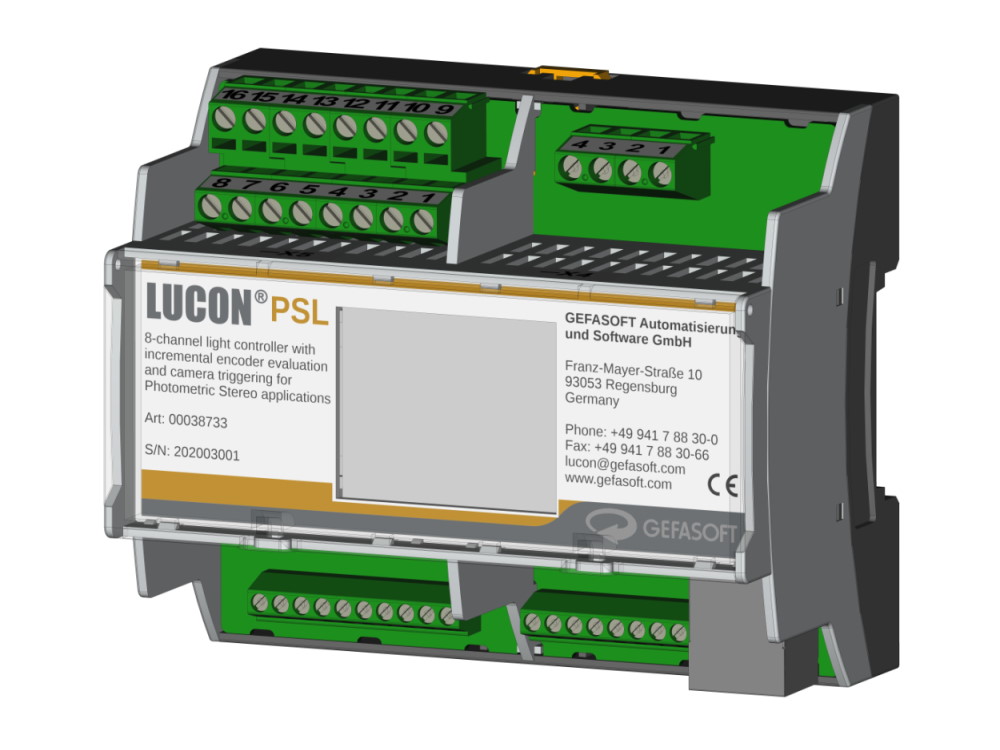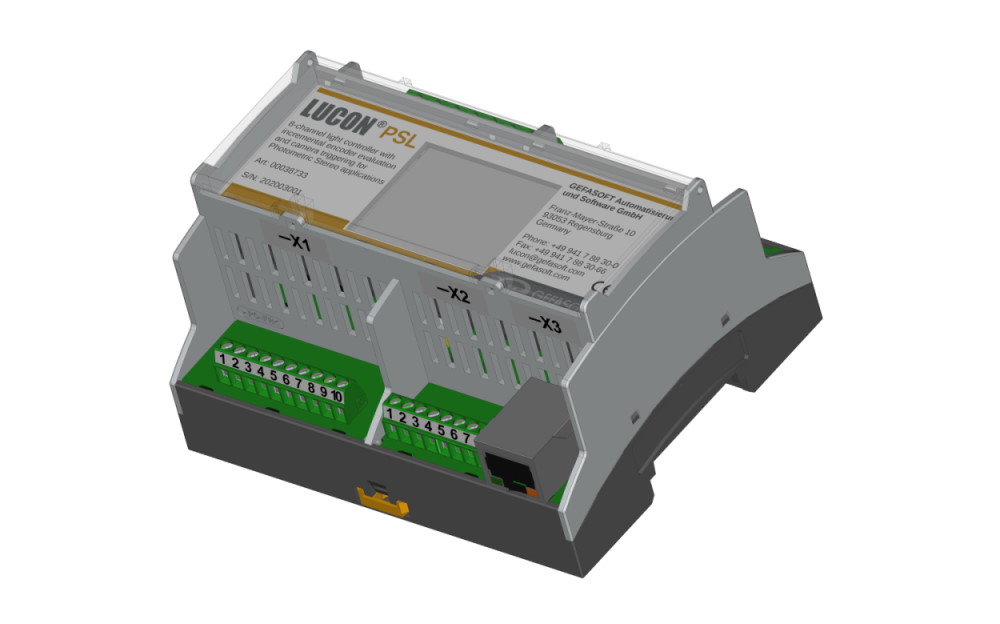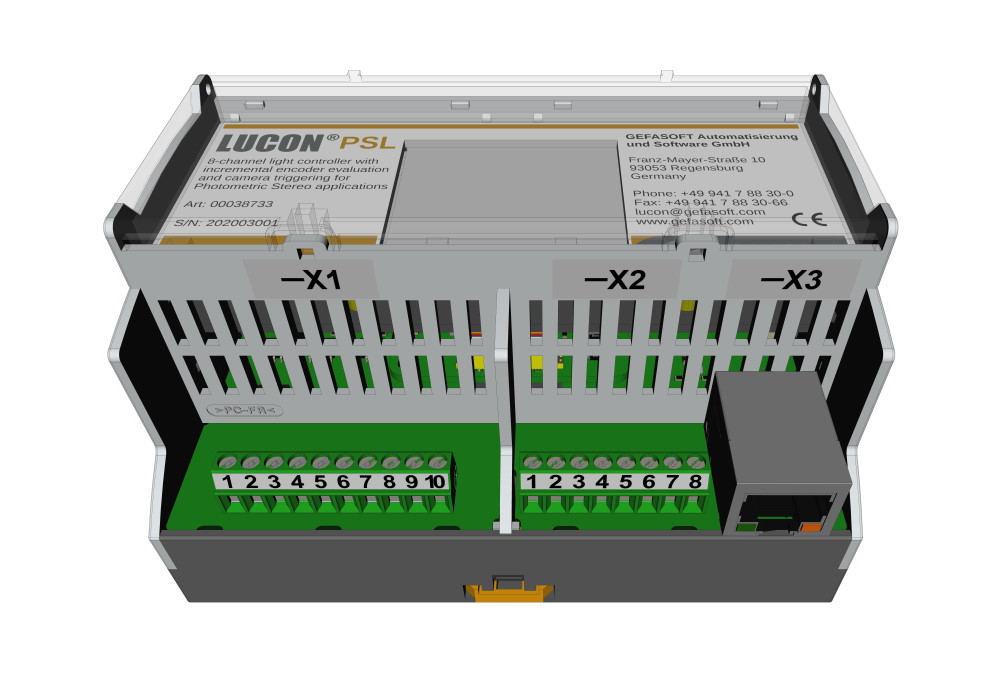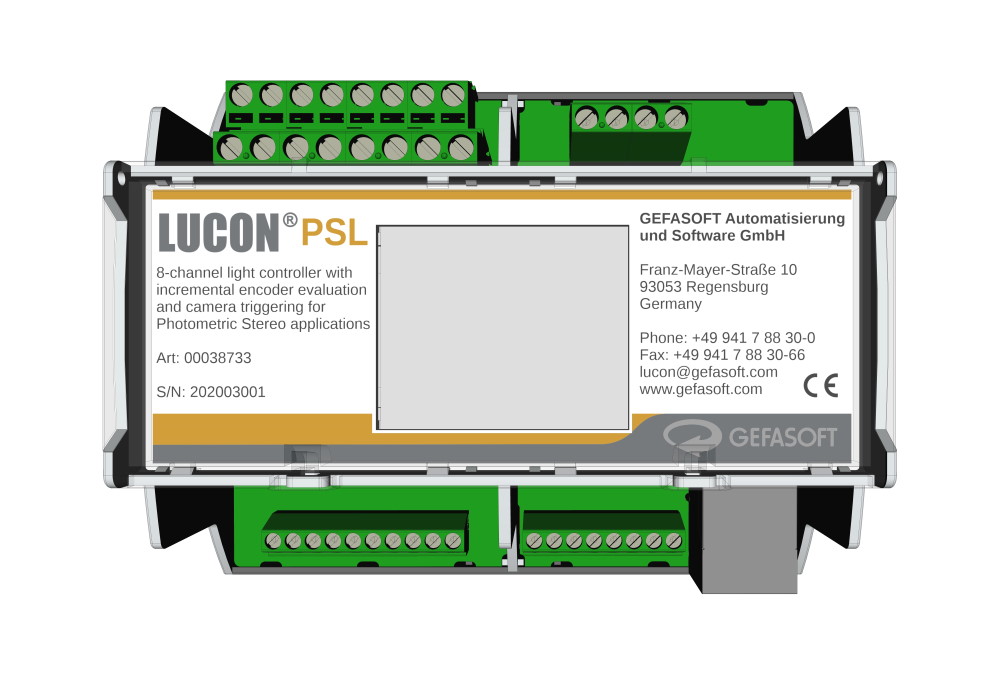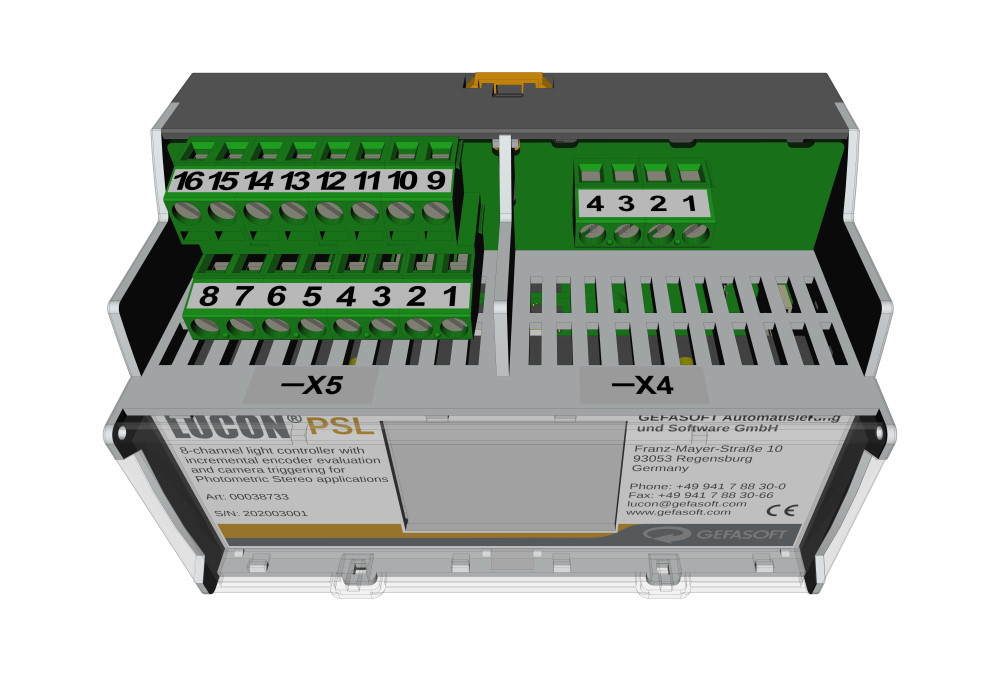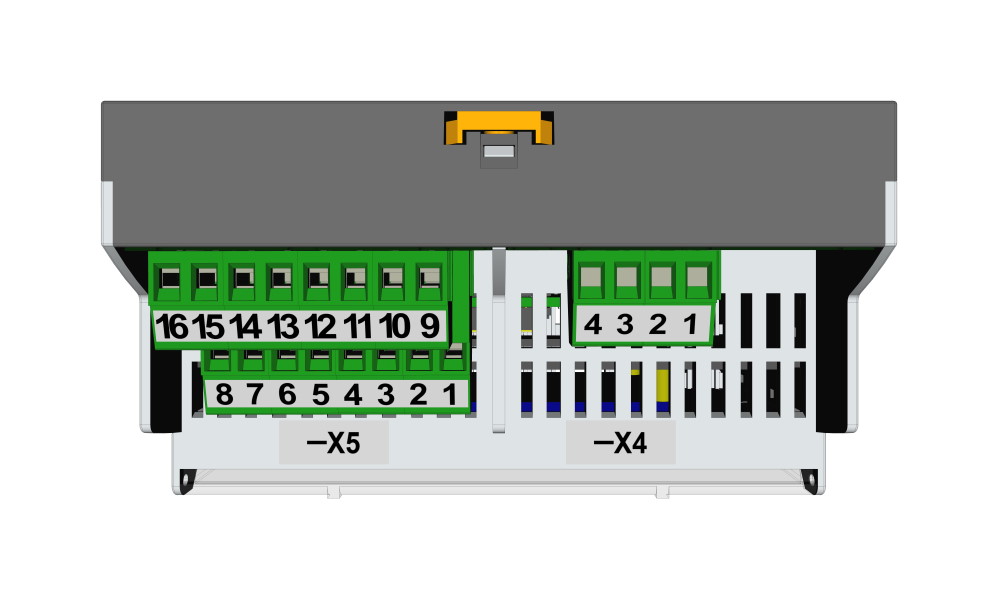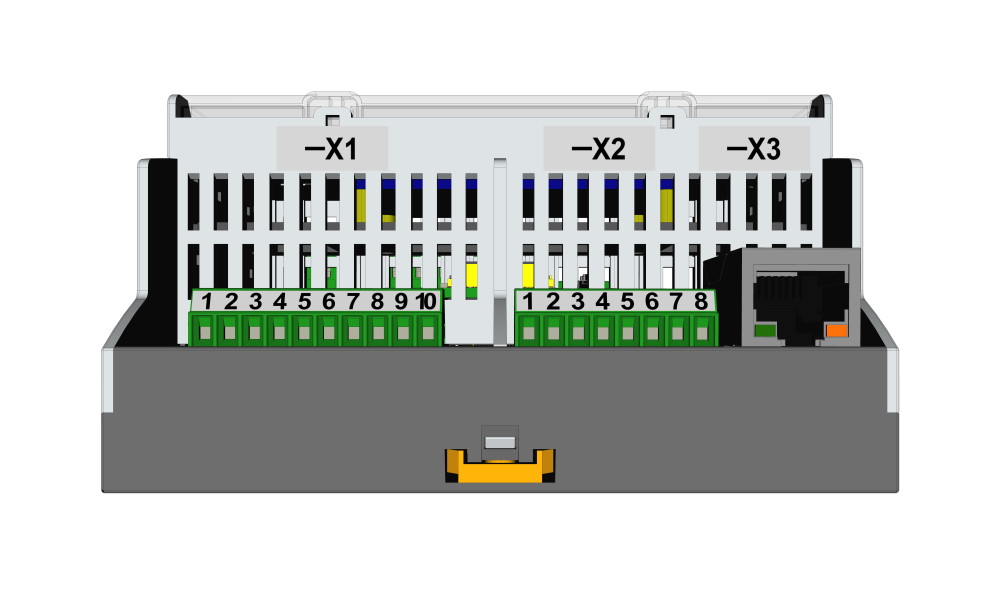Description
What is photometric stereo?
By observing an object under different lighting situations, the surface normals of the object can be determined in image processing. The reason for this is that the amount of light that a surface reflects on an object depends on the position of the light source as well as the position of the observer (bright surfaces in direct light, dark surfaces in shadow). If the position of the camera and the illumination is known, the surface orientation of the object can be limited by measuring the incident light into the camera. If there are enough light sources from different angles, the orientation of the surface can be narrowed down to a single orientation and thus determined. In summary, this means that de-facto-three-dimensional information can be obtained from a series of two-dimensional images.
Why use photometric stereo?
On flat surfaces, photometric stereo makes it possible to reliably detect deviations such as cracks, scratches, pores or notches. With this method, even the smallest irregularities in the surface of objects can be detected. Photometric stereo is a cost-effective and simple surface inspection that can be used on even highly reflective metal objects. As a result, the method is mainly used in automated quality control for inline surface inspection.
Photometric stereo with line scan camera
The LUCON® PSL combines the photometric stereo method with a line scan camera. This makes it possible to use photometric stereo where it was previously not possible: on rotationally symmetrical objects and on continuous material. For this purpose, either the camera or the object to be inspected must be moved.
However, a perfectly even movement is not achievable in practice. There are always slight deviations in the speed. This can be caused by slippage in the drive system, fluctuations in the supply voltage or fluctuations in frictional resistance. To compensate for these effects, an incremental encoder is used to monitor the relative movement of camera to object. With its help, the distance travelled can be recorded very precisely - and independently of the actual speed. Furthermore, with the help of the incremental encoder it is possible to precisely acquire camera lines of the object. This ensures that no areas are omitted (=under triggered) or areas are detected twice (=over triggered). The aim is to capture the complete surface of the object for each lighting situation (with four lighting situations this results in four images, one per light situation).
With a line scan camera and sufficient light, the exposure time of the camera can be chosen so short that a continuous movement of the test specimen is possible. It is not necessary to stop the motor for each line. Of course, LUCON® PSL can also be used with an area scan camera. However, in this case not all the advantages of LUCON® PSL are optimally used.
Why use LUCON® PSL?
LUCON® PSL offers a cost-effective, flexible and very fast way to use photometric stereo with a line scan camera. The evaluation of an incremental encoder, the triggering of the camera and the control of the illuminations (with resistor) is done by LUCON® PSL. The light controller is configured intuitively and conveniently via the integrated, modern web interface. With the help of the adjustable prescaler for the incremental encoder evaluation, it can be ensured that no area of the test object is captured more than once or is not captured at all.
For maximum flexibility, each light can be switched on for different lengths of time. This makes it possible, for example, to compensate different distances between the illuminations and the test object. There is no need for time-consuming adjustment of the camera’s exposure time for each lighting situation. Furthermore, it is possible to freely select how many lighting situations a sequence consists of: one or up to eight are possible.
In order to further optimize the cycle time, the LUCON® PSL optionally also evaluates the signals from a camera. As soon as the camera gives the signal that it is ready to take a new picture, the light controller switches on the next light and the camera is triggered. This eliminates unnecessary waiting times.
How does the LUCON® PSL work?
The light controller must be configured that a new recording series is now to begin. To do this, the number of sequences are to be recorded have to be defined. The object under test is moved rotated (not controlled by LUCON® PSL) and the light controller evaluates the incremental encoder. When the incremental encoder reaches a preset value (prescaler), the light controller starts the 1st sequence by activating the first lighting and triggering the camera. When the start-up time for the first lighting has elapsed, the light is switched off and the controller waits for the camera until it is ready to capture the next line.
Now the next lighting is activated and the camera is triggered again. After the start-up time of light 2, it is switched off again and the is waited for the camera again. This process is repeated until all lighting situations have been captured. This completes the first sequence. Now the system waits again until the incremental encoder returns the appropriate path and the next sequence is started. This is repeated until the last sequence is completed. The images from the line scan camera must finally be processed and evaluated with image processing software (e.g. Viper.NET from GEFASOFT Automatisierung und Software GmbH).
Benefits of the LUCON® PSL
- Up to 8 lighting situations with different on-times
- Lighting control, incremental encoder evaluation and camera triggering in one unit
- Autonomous operation for very short cycle times
- Adjustable prescaler for the incremental encoder
- Evaluation of the camera signals for even faster recording
Do you have questions about the LUCON® PSL? Contact us! We will be happy to help you. Thanks to our many years of experience in image processing applications, we are happy to assist you in integrating our light controllers into your application.
Do you need a complete image processing system? Our experts from image processing will be happy to help you.
Specification
| Article Number | 00038733 |
| Supply voltage Logic (VIN) | 12 to 24 VDC |
| Supply voltage Lighting (VLIGHT) | 5 to 48 VDC |
| Max. Number of lighting situations | 8 |
| Current per Channel (I) | up to 10 A peak |
| Max. line frequency | 667 kHz |
| Switch-on times per lighting situation | min. 1 µs and max. 1000 µs |
| Supply voltage for incremental encoder | 5V or VIN (Adjustable via software) |
| Interface | RJ45 @ UDP (with configuration website) |
| Installation | 35 mm DIN top-hat rail, EN50022 |
| Dimensions (w x d x h) | 107,6 mm x 98,4 mm x 60,6 mm |
| Operation temperature | 0 °C - 50 °C |
